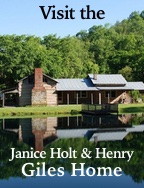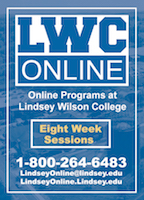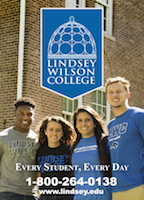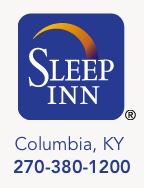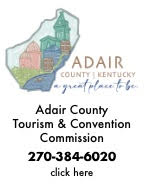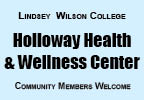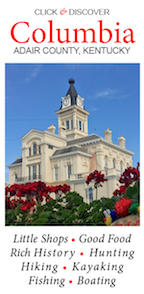| ||||||||||
Dr. Ronald P. Rogers CHIROPRACTOR Support for your body's natural healing capabilities 270-384-5554 Click here for details 


Columbia Gas Dept. GAS LEAK or GAS SMELL Contact Numbers 24 hrs/ 365 days 270-384-2006 or 9-1-1 Call before you dig Visit ColumbiaMagazine's Directory of Churches Addresses, times, phone numbers and more for churches in Adair County Find Great Stuff in ColumbiaMagazine's Classified Ads Antiques, Help Wanted, Autos, Real Estate, Legal Notices, More... 
|
JIM: In 1913, Oldtimer looked back on a changed Columbia, KY The people now are just as good...," he remembered. But the buildings and businesses were nothing like the Columbia where he had lived to elderhood Prologue:While researching this piece, I came across yet another "history" of Columbia. Being as I'm man of peace and of unusually even temperament, God forbid that I should be accused of trying to steer things up, but don't you agree that Columbia sorely needs a ten-pin alley and a grog-shop? -"Jim" By "Jim" The following appeared in the August 20, 1913 News and makes a good companion piece to Mr. Frank Nell's "memories of old Columbia." Frank Nell's memories of old Columbia: from Interview with Naomi Green Notes in parentheses were added by the CM contributor. An Old Citizen Interviewed Meeting on the streets the other day an old citizen of Columbia, whose memory runs back sixty years or more, we asked him to tell us some of the changes in the old town within that period. "Why," he said, "the old town is gone - it is a mere memory to us of the older generation. The men and women who walked the streets then are seen no more, and the names of many of them are forgotten to you, of the present generation. "I look around the public square, and I see but two of the old houses which were standing then. "The old court-house has been removed, and one more commodious, and sightly, has taken its place. "Where the Jeffries Bros. building stands was an old brick. in which McBeath & Baker sold goods; on the site of the Tutt building was the residence of Milton P. Wheat, a part of used as a store from which he sold goods, at cost, to the purchaser; there was a business house on the corner now occupied by the Bank of Columbia, owned by Willis Wheat, who was also a merchant; [and] just beyond this was the store-house of Josiah Harris, another prominent merchant. (Messrs. Milton P. and Willis Wheat were natives of Bourbon County, the sons of Zachariah Wheat. Eli, their brother, was appointed as Adair's first County Judge in 1851, and yet another sibling, Zachariah, lived in Columbia from the late 1820s until the 1850s. He read law under Cyrus Walker and attained some degree of prominence as a jurist while residing there. Zachariah's second wife (of three) was a member of the Frazier family mentioned in passing below. An article in the January 8, 1908 News about Eli Wheat's appointment as County Judge stated that "Mr Wheat was also carrying on the saddlery business in his shop in the little frame building in the Isenburg property, and later used as a postoffice." This "ragged little saddler's building" was occupied by Bradshaw & Jones' undertaker's shop up until a short time before it was razed in the spring of 1909 to make way for the new Russell & Co. edifice. -"Jim") "On the corner of Greensburg Street was a grog-shop and a ten-pin alley; where Russell & Co's business house stands was ragged little saddler's shop. Between the buildings name were small shanties and open lots. Many of you can remember these. "At that time there were only two church buildings--Baptist and Methodist. The Baptist church was located as at present; the Methodist church was back of the lot on which Henry Miller's residence stands. There were but two residences beyond the Presbyterian church, on Burkesville street--the Frazier property and the now-Jeffries property. Since then both of these houses have been torn down and new ones erected on the same sites. (An article some years earlier in the News had noted that the Methodist church building "stood back of H.N. Miller's garden" and that "for many years was it was the only house of worship in Columbia and was used by all denominations." Judge H.C. Baker, in his Sketches of Adair County, said of this structure, "It was here in 1852 and was then an old church [building]." (The Frazier property was that owned by well-to-do merchant James Frazier and his wife, Catherine A."Kitty" Frazier, nee Brawner. James died prior to 1850, and Judge Baker recorded that "In 1856 the Presbyterian church building was erected in Columbia, the ground being donated by Mrs. Kitty A. Frazier." -"Jim") "On Bowmer Heights there were only two houses--the Wilson brick, and the Russell brick, both still standing.(What is here referred to as Bowmer -- or more frequently, Bomar -- Heights is now known as the Jamestown Hill area. -"Jim") "On the Lindsey-Wilson grounds was an old log house erected possibly about the time the town was located." (This may have been the structure mentioned in the May 20, 1903 News: "The old house on Arbor Vitae hill will be sold at the court-house door Saturday at 4 p.m. Brick and stone excepted. It must be removed within thirty days." The property known as Arbor Vitae had been purchased for the Lindsey Wilson Training School campus. The June 3, 1903 News reported Mr. L.B. Hurt had bought the old house and torn it down. -"Jim") "The (Judge James) Garnett building, the only other residence in that part of town, was erected about that time, and was a one story, or story and a half building. After its purchase by Judge Garnett, it was renovated and enlarged. "A tannery was located on the branch near Eubank's shop, the vats in what is now the Scott Montgomery yard. An old carding or woolen mill stood on the ground now occupied by the Hec (Joseph Hector) Judd residence. ("The branch" probably refers to Town Branch. An article in the March 23, 1921 edition of the News gave additional information about the carding mill: "[M]any years ago a carding machine was operated on the lot now used as Mr. J.H. Judd's garden. It was not propelled by steam or water, but by jennets. The factory was owned by Mr. Henderson Wilson, long since dead, who, when his machinery was ready to start, placed two jennets on the tread wheel and they would at once start stepping, putting the machinery in motion...People from all over county brought their wool to this factory and it was soon carded into rolls. The rolls were spun and turned into socks and stockings...Some of it was also weaved into Linen for dresses." -"Jim") "Yes, the old town is gone, and many of the families that gave life and tone to its society are without representation in our midst. The names of many of them are scarcely known to the present generation. It was about sixty years ago when the Columbia M. and F. High School was erected. It infused new life into the town, just as the Lindsey-Wilson brought us new life a half century later. (The Columbia Male & Female High School was organized in 1853 & opened in 1854. The Louisville Conference of the Methodist Church approved the Lindsey Wilson Training School in the fall of 1902, construction began in 1903, and the school opened in January, 1904. The advent of the public graded & high school in 1909 sounded the death knell of the venerable M & F, but the buildings were used for several years to house the graded & high school. -"Jim")"There is one consolation, even if the old town is gone, we have a better town than we had then: more and better schools, more and better churches, better streets and pavements, better business houses, and as good as people were then, we trust that the people now are just as good, and may be, in some respects, a little better. If they are not, they ought to be." We hope to meet the old gentlemen again, and gather other facts. This story was posted on 2010-11-05 06:16:54
Printable: this page is now automatically formatted for printing.
Have comments or corrections for this story? Use our contact form and let us know. More articles from topic Jim: History:
JIM: Commercialized Christmas lamented, in 1909 View even more articles in topic Jim: History |
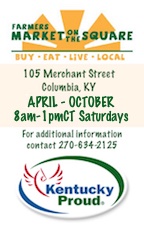


|
||||||||
|
| ||||||||||
|
Quick Links to Popular Features
Looking for a story or picture? Try our Photo Archive or our Stories Archive for all the information that's appeared on ColumbiaMagazine.com. | ||||||||||
|
Contact us: Columbia Magazine and columbiamagazine.com are published by Linda Waggener and Pen Waggener, PO Box 906, Columbia, KY 42728. Please use our contact page, or send questions about technical issues with this site to webmaster@columbiamagazine.com. All logos and trademarks used on this site are property of their respective owners. All comments remain the property and responsibility of their posters, all articles and photos remain the property of their creators, and all the rest is copyright 1995-Present by Columbia Magazine. Privacy policy: use of this site requires no sharing of information. Voluntarily shared information may be published and made available to the public on this site and/or stored electronically. Anonymous submissions will be subject to additional verification. Cookies are not required to use our site. However, if you have cookies enabled in your web browser, some of our advertisers may use cookies for interest-based advertising across multiple domains. For more information about third-party advertising, visit the NAI web privacy site.
| ||||||||||





















